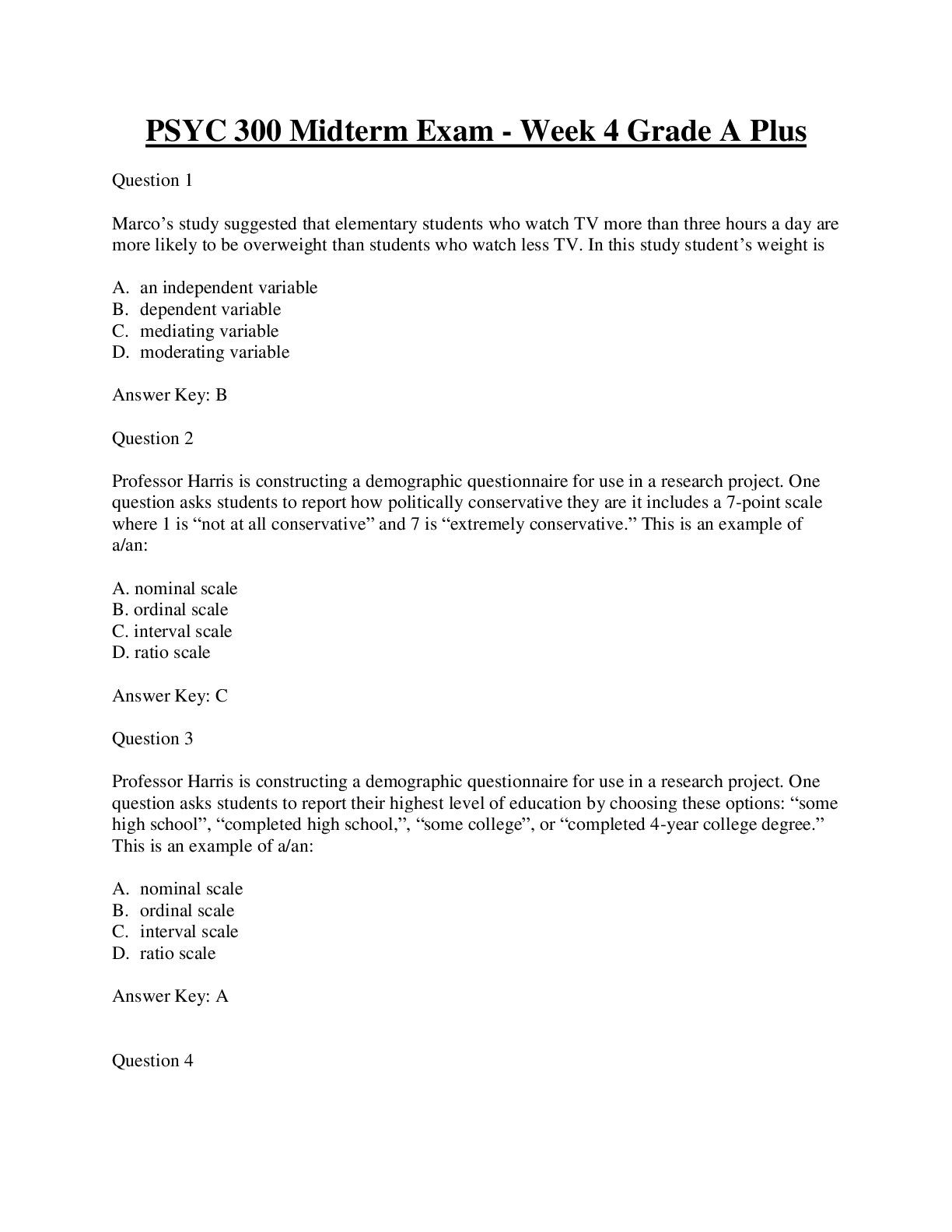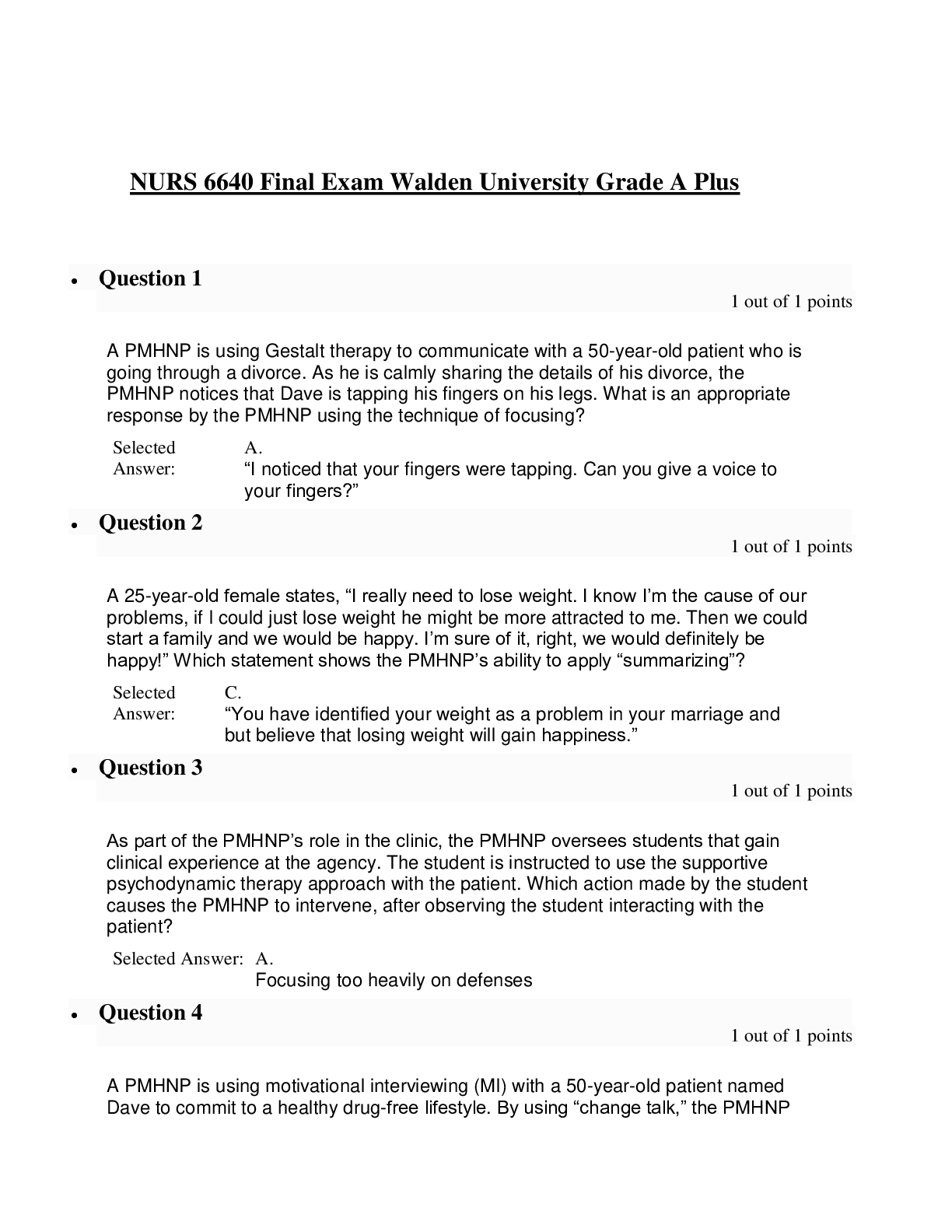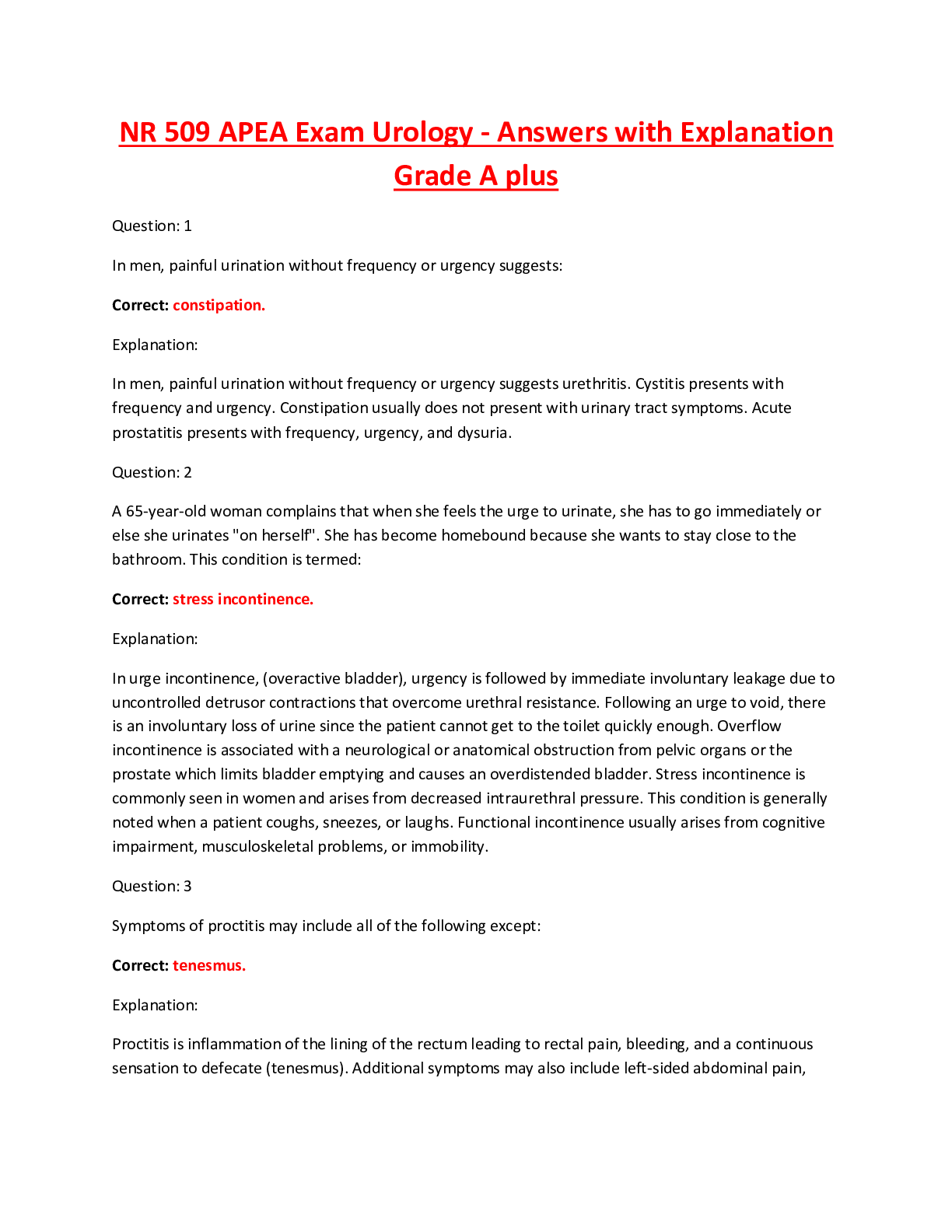Psychology > EXAM > PS 370 Exam Ashworth College Grade A Plus 2019/2020 (All)
PS 370 Exam Ashworth College Grade A Plus 2019/2020
Document Content and Description Below
Question 1 The scientific and informational value is generally: Question 2 The ANOVA procedure depends on calculations of: Question 3 The most important method for decreasing the error t... erm is to: Question 4 The statement "variation is necessary to carry out experiments": Question 5 In order to test the effects of the 1988 heat wave on worker productivity, 48 machinists were randomly assigned to two groups of 24 machinists each. Each group was tested at a different room temperature (cool and hot) using dependent measures of number of parts produced and accuracy. What type of design does this study represent? Question 6 Which of the following is most closely associated with the concept of "sampling error"? Question 7] = Statistical tests CANNOT tell us whether: Question 8 = The randomized pretest-posttest, control-group design is an improvement over the randomized posttest-only, control-group design because the: Question 9 == What is usually the major contributor to error variance? Question 10 If error variance were to occur in an experiment: Question 11 A researcher wants to look at the effects of "stress endurance treatment" on self-esteem in cancer patients. The researcher has 50 cancer patients attend "stress endurance treatment" sessions once a week. At the end of the 8-week treatment, participants are measured on self-esteem. This is an example of a(n) __________ design. Question 12 In order for us to study causal relationships among variables, it is necessary for: Question 13 One of the chief weaknesses of an ex post facto procedure is that: Question 14 A researcher measures prisoners on childhood physical abuse and notices high levels of abuse. He then concludes that abuse leads people to commit crimes. This is an example of a(n) __________ design. Question 15 Laczniak and Muehling (1993) suggest that manipulations checks should be considered: Question 16 Which of the following is NOT a source of between-groups variance? Question 17 The Solomon four-group design was developed in an attempt to: Question 18 If the p-value for an F-test is less than the alpha level chosen in the experimental design phase, you should __________ significant difference between groups. Question 19 Whenever the F-ratio is near 1.00, it means that: Question 20 A researcher decides to study the effects of dance therapy on self-esteem in emotionally disturbed adolescents. One residential program consents to try the dance therapy treatment, whereas another similar program refuses to try dance therapy, but allows the researcher to measure self-esteem. Self-esteem is measured before and after treatment in both groups. This is an example of a __________ design. Question 21 Correlated-groups designs are generally more sensitive than between-subjects designs to: Question 22 Single-subject designs are sometimes preferable to between-subjects group comparison designs because: Question 23 A good way to control for carry-over effects in within-subjects experiments, provided that there are not too many experimental conditions, is: Question 24 The single-group, pretest-posttest design, although it is considered a(n) __________ design, is a(n) __________ design. Question 25 Single-subject designs are often used in research on: Question 26 Which of the following is NOT a characteristic of a within-subjects design? Question 27 Single-subject experimental designs are variations of within-subject designs because the same: Question 28 A researcher is using a within-subjects design. After condition two (there are a total of three conditions) the researcher notices that the participants are looking bored and restless. After the third condition, the researcher records a falling off of performance. This is a(n) __________ effect. Question 29 In a repeated-measures design, the single largest contributing factor to error variance has been removed. What is that factor? Question 30 Which of the following is NOT a characteristic of matched-subjects designs? Question 31 Matching several variables simultaneously: Question 32 In terms of the F-test, the value of F is increased by __________ variance. Question 33 The single-subject, randomized, time-series design is essentially an interrupted time-series design with one refinement. What is that refinement? Question 34 Single-subject designs are weak in __________ validity. Question 35 In matched-subjects designs, the important variables to match are: Question 36 It is important in a matched-subjects design for researchers to assign each matched set of participants randomly to the conditions primarily because: Question 37 What is the major strength of the within-subjects design? Question 38 Which of the following is a potential confounding factor in within-subjects designs but NOT in a between-subjects design? Question 39 Which of the following is NOT an example of a common usage of single-subject designs? Question 40 2 In within-subjects designs, each participant: [Show More]
Last updated: 2 years ago
Preview 1 out of 11 pages

Buy this document to get the full access instantly
Instant Download Access after purchase
Buy NowInstant download
We Accept:

Reviews( 0 )
$15.00
Can't find what you want? Try our AI powered Search
Document information
Connected school, study & course
About the document
Uploaded On
Feb 12, 2020
Number of pages
11
Written in
Additional information
This document has been written for:
Uploaded
Feb 12, 2020
Downloads
0
Views
111
























